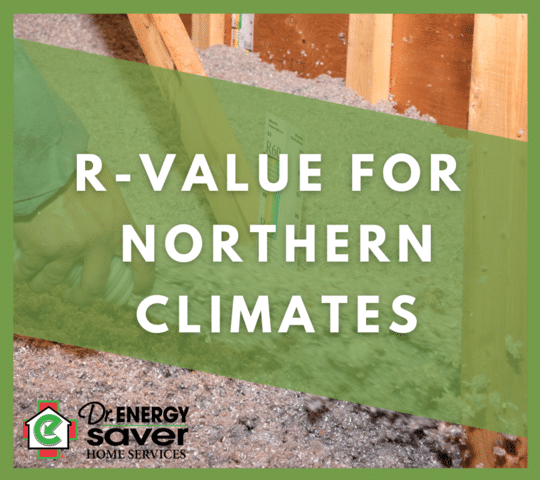What you need to know about R-Value for Northern Climates

It’s coming. Consistent single-digit and below-zero weather makes even the hardiest Minnesotan or Wisconsinite question “how do we do it each winter?” At this point in the season, we hear from many homeowners who are beginning to notice cold floors, drafty rooms, and high energy bills. These are unfortunately symptoms of insufficient or failing insulation. But what can you do about it? And what’s the best solution for improving your home’s comfort?
SCHEDULE A FREE ESTIMATE
In this blog, we will break down the concept of R-value and what it means for homes and cabins in our region.
R-value is about Resistance
Put simply, R-value measures resistance, or the ability insulation has to stop heat from escaping from your home. The higher the R-Value, the stronger the thermal barrier. R-Value is measured per inch of insulation and varies depending on the density and thickness of the material. Porous fiberglass has a lower R-value than a dense rigid foam insulation. Again, the greater the R-value, the better your insulation is at resisting heat traveling through it.
This climate map from Energystar.gov provides a recommendation for R-value according to region. The DBS service area is located in zone 7 and spans from Eau Claire to Ashland in Wisconsin and from Grand Marais to St. Cloud in Minnesota. Not surprisingly, we need insulation with a higher R-value, in the 30-60 range, depending upon a few factors. We will illustrate this point by looking at an example from Embarrass, MN in northern St. Louis County.
Embarrass, MN boasts the coldest temperatures in the state of Minnesota. Nicknamed “The Cold Spot,” its average temperature year-round is a whopping 34.4 °F/1.3 °C. If you live in a place like Embarrass, MN you need to look at the insulation in a couple of areas.
First, Get Your Attic Insulation Inspected
Is the attic insulated already? Consulting the chart above, partially-insulated attics need insulation with an R-value of at least 38-49. No attic insulation means you should add insulation of an R-value of 39-60, probably towards the higher end in Northern Minnesota and Wisconsin. DBS offers closed-cell spray foam, recycled cellulose insulation, and rigid foam options, to accommodate the size and style of your attic.
Next, assess the insulation in your basement or crawl space

Check out your basement rim joists. Sealing this area of your home is crucial to preventing cold air from entering your home, yet it is often overlooked. Unsealed rim joists lead cold air directly to the first floor of your home, combatting the efforts of your heating system. Basement walls should also be assessed for cracks and drafts. Breaks or gaps in your block or poured foundation allow both water and cold air to enter your home. The chart above shows that home and cabin owners in our region should aim for insulation that has an R-value of 25-30 in the basement.
Now, consult the experts at Dr. Energy Saver® from DBS!
Our team installs a variety of systems to help home and cabin owners in our northern climate. For attics, we offer spray foam insulation, air sealing, blown-in cellulose, and rigid foam insulation, depending on the structure or your roof. Our SuperAttic system is perfect to completely seal garage and attic spaces with HVAC systems, finished floors, storage space, and it prevents ice damming. We also provide garage insulation, crawl space insulation, and wall insulation.

